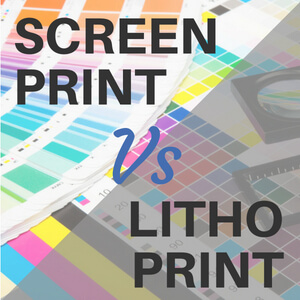Eco-Friendly and Low-Impact Options in litho printing
A Comprehensive Overview to Comprehending Litho Printing Strategies
The world of litho printing, a method stemming from the late 18th century, is a fascinating blend of background, advancement, art and scientific research. Remain with us as we journey into the exciting realm of litho printing.
The Historical Advancement of Litho Printing
The historic trajectory of litho printing, a crucial technology in the realm of communication, is an exciting story of human ingenuity. The procedure developed with the introduction of the rotary press, which significantly raised efficiency. Each phase of litho printing's development showcases humankind's ruthless quest of efficiency and high quality in visual communication.
Decoding the Science Behind Litho Printing Inks
Progressing in the expedition of litho printing strategies, the focus now changes to the scientific research behind litho printing inks. The composition of these inks, their drying procedure, and shade mixing methods create the foundation of this intricate art kind. Recognizing these components is vital to grasping the craft and achieving the wanted print results.
Make-up of Litho Inks
In lithographic printing, the essential role of litho inks can not be overemphasized. Pigments, the color-providing elements, are carefully ground bits suspended in the vehicle, a liquid that lugs the pigment onto the printing surface. Each part plays a crucial part in the final print's high quality, making the accurate formula of litho inks a detailed scientific research.
Ink Drying Process
From the structure of litho inks, interest turns to the interesting process of ink drying. The drying process is vital, as it impacts the final print's quality and longevity. 2 primary techniques are made use of in litho printing: oxidative drying out and absorption. Oxidative drying out involves the ink reacting with oxygen in the air to create a difficult, dry film. This approach provides a durable finish, however can be slower contrasted to absorption. Absorption, on the various other hand, involves the ink permeating into the paper fibers, which is a quicker process but can cause less dynamic colors. The option between these methods depends on factors such as print rate requirements, the paper type utilized, and the desired coating.
Shade Mixing Techniques
While the drying out procedure plays a vital duty in litho printing, the scientific research of color blending techniques holds equal relevance. This is a complex process that includes the mindful blending of key shades: cyan, magenta, and yellow, in differing proportions to accomplish a large variety of colors. The enhancement of black ink, understood as 'key', assists in regulating the strength and deepness of the shades. The scientific research behind litho printing inks additionally takes into consideration the openness of the ink, which affects just how shades overlay and mix. To achieve a reliable shade mix, print professionals have to also recognize the complexities of ink actions, shade theory, and the physical residential properties of the substrate on which the ink is used.
The Art and Layout Elements in Litho Printing
Litho printing breathes life into art and layout with its unique aspects. The procedure entails creating an image on a lithographic sedimentary rock plate or metal plate with a smooth surface. The picture is then published onto a medium, typically paper, by moving the ink from the plate. What sets litho publishing apart is its ability to replicate intricate designs with high fidelity, making the output nearly identical to the initial artwork. This is accomplished via making use of various line techniques such as hatching, stippling, and cross-hatching, which permit for a variety of tonal effects. Furthermore, litho printing fits a variety of shades, making it possible for musicians to develop lively and dynamic prints. This mix of precision and convenience makes litho printing a preferred selection for many artists and developers.
Modern Applications of Litho Printing Techniques
Litho printing techniques have actually found extensive usage in the modern-day business industry. Its influence and value remain to grow with the introduction of new innovations and technologies in the field. This section will certainly explore these contemporary applications and the transformative duty they play in the printing industry.
Industrial Litho Printing Uses
Litho printing remains an important component of the industrial industry. High-volume printing jobs, such as the manufacturing of publications, newspapers, and product packaging, this hyperlink depend on litho printing for its capability to supply exceptional picture high quality and expense efficiency. Litho printing additionally gives a wide shade spectrum, exceptional to that of electronic printing.
Advancements in Litho Printing
Pushing the limits of standard methods, contemporary improvements have actually sustained a host of technologies in litho printing. One popular growth is digital litho printing, which incorporates the virtues of electronic innovation with litho's top quality result. These advancements underscore the long-lasting relevance of litho printing in the modern world.
Discovering the Process of Litho Printing: Detailed

Difficulties and Solutions in Contemporary Litho Printing

In spite of the precision and custom that litho printing happily maintains, it is not without its set of contemporary challenges. Digital litho printing allows for cost-efficient brief runs and easy customization, attending to the concern of variable data. Therefore, while there are difficulties, the litho address printing sector is proactively adjusting to fulfill them head-on, ensuring its relevance in the future.
Verdict
To conclude, litho printing, with its abundant background and clinical intricacies, holds a significant place in the print industry. As the overview reveals, it's a synthesis of art and technology, with contemporary developments guaranteeing its significance. The market faces difficulties that call for cutting-edge solutions, with a focus on automation and sustainability. The future of litho printing rests on its ability to adapt to these changing demands, attesting its enduring worth in a progressing market.
